We’ll see you in there.
Connect to customize your food & drink discovery.
By signing up you agree to our Terms of Service and Privacy Policy.
Vegan
Mossop's Social House
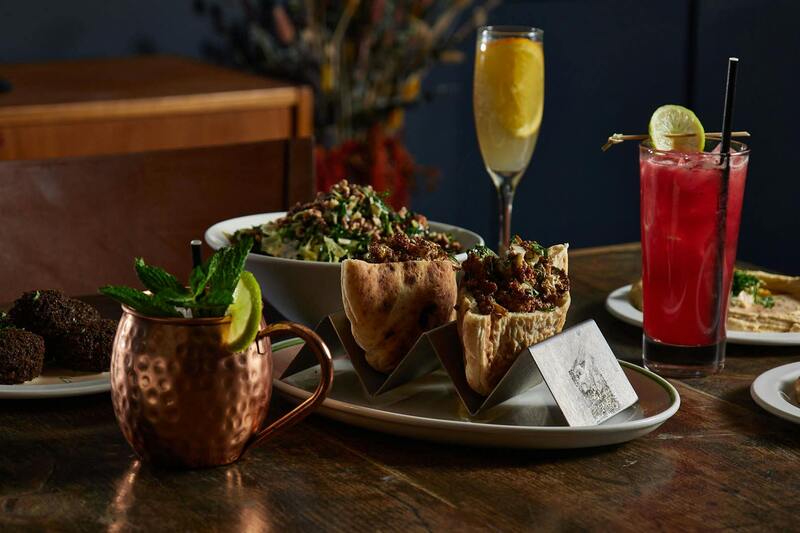
Have you heard the one about Mossop’s?
After the Great Fire of 1904 (yes, Toronto had a Great Fire) destroyed over 100 buildings in downtown Toronto, local entrepreneur Frederick Mossop decided to buy a burnt-out lot at 56 Yonge Street and erect a hotel.
With the fire’s devastation weighing on his mind, Mossop hired noted Canadian architect, J.P. Hynes to design a Edwardian Classical-style edifice that was not only beautiful but completely non-flammable. When inaugurated in 1909, the revolutionary Hotel Mossop earned high praise for being “one of the most thoroughly constructed fireproof buildings in the Dominion”.
While Hotel Mossop eluded subsequent fires, it didn’t survive Prohibition. It closed in 1927, only to reopen under the name Hotel Victoria. Since then, the hotel has gone through various owners and iterations. Perhaps none is more radical, however, than the latest resurrection in which the renovated ground floor – rechristened Mossop’s Social House – has been revamped into a loungey restaurant-bar serving vibrant, aromatic, healthy and thoroughly modern Levantine-inspired dishes from dawn until way past dusk.

The team behind the renovation – headed by WestGrove Design– has taken care to artfully pay reverence to the hotel’s storied past. The entrance lounge, with cushy divans, coral walls and a fireplace, incorporates the area that was once the ladies-only entrance. It leads into a grand main salon, supported by marble pillars and anchored by a long marble bar that also serves as the hotel’s check-in.


Here, ornate molding, cornices and dark wood paneling are illuminated by soft spots and soaring skylights. Although the vibe is Old World, it’s neither fussy nor formal. Instead, it leans into fun, with elements such as floral wallpaper in whose blossoms you can discern faces of former hotel guests.
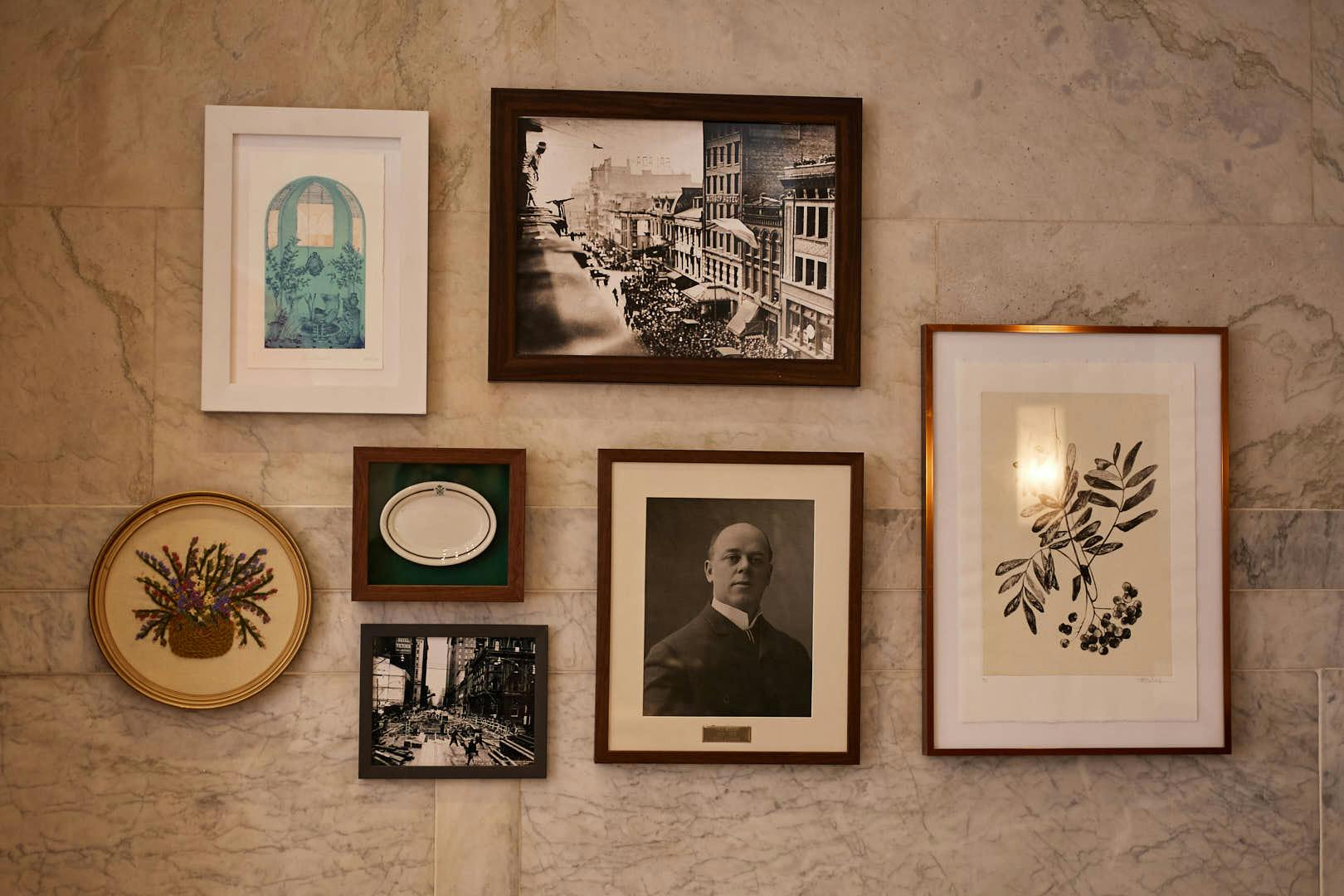
Unearthed during the renovation, rescued treasures abound. Prominent among them is the original, elegant mosaic tile flooring. There’s also a monogrammed bread and butter plate and decades’ worth of hotel matchbooks, both framed to showcase the hotel’s history.
If Mossop’s style flirts with the past, its substance – in the form of food and drink – purposefully breaks with it, moving full-spice ahead into the future. Says hotel general manager Jordan Gravelle, “What we were looking for here was a restaurant that doesn’t serve your normal hotel fare. We wanted to be outside the box.”

With this mission in mind, it made perfect sense to call upon Tomer Markovitz, the enterprising and original mind behind Parallel, a tahini factory/restaurant, and Romi’s, a bakery/cafe/falafelry, to design a menu that would explode the traditional hotel food box to smithereens.
“The owners told me: ‘Think differently’,” said Markovitz. “So making a burger didn’t even cross my mind.”
What did cross his mind were memories of his native Tel Aviv, where Markovitz and friends haunted hotel restaurants, most of them chef-driven destinations in their own right. “[In Toronto], I would never thinking of going to a hotel for dinner, but back home that’s all I do.”

Although Hotel Victoria has 56 rooms full of potential diners, the idea is that Mossop’s will also lure in the hungry downtown masses. As Gravelle notes, “between 4 and 6pm alone, you can probably count 10,000 people walking by outside on Yonge Street.”
Fortunately, food at Mossop’s, as executed by chef Asokkumar Tharumalingam, is an all-day parade, an organic flow of non-stop Middle Eastern plates, almost all of them shareable.
“The idea is to intertwine breakfast, lunch and dinner,” says Markovitz. “Morning, afternoon, night, the biggest difference is the protein. Back home, our diet is built on legumes and vegetables, less on meats because we have tahini and hummous. Packed with calcium and iron, they’re so good for you. They’re superfoods.”

To jumpstart the day, both tahini and hummous show up right away in the salatim platter of Israeli salads and spreads, along with creamy labneh, glazed Moroccan carrots and a bright and herby chopped salad. For spreading and/or mopping there are thick slices of fresh-baked challah. The Israeli version of a continental breakfast, the salatim gets you into the requisite sharing mode that prevails at Mossop’s, while opening your appetite for the main offerings.
“We call it ‘Israeli breakfast,’ but it’s the concept that’s Israeli, not the food,” stresses Markovitz, adding that while he is Israeli, his four grandparents hailed from Libya, Turkey, Hungary and Italy. Just like Israel, “which combines everything from everywhere,” Markovitz’s Levantine menu is generously regional, drawing on numerous Middle Eastern and Mediteranean ingredients and influences.

A case in point is the shakshuka. Soft poached eggs float on a tangy red sea of rich tomato sauce infused with pilpelchuma, a Libyan chili garlic paste that was a favourite condiment of Markovitz’s grandmother.
Other options are more recognizably North American, but the Mossop-fied versions add Levantine tweaks and twists that make you taste them anew.

The avocado toast is served on toasted challah with lashes of tahini and a generous dusting of Za’atar. Za’atar also lends unexpected aroma and spice to the steak & eggs combo, with both the juicy striploin and jiggly sunny-side up eggs benefiting from a healthy showering.

Then there’s the Nutella French toast. For those of you who think the best French toast ever is made with golden, egg-based challah, imagine the upgrade when Nutella is alchemically braided into the dough. Let’s just say it’s so breakfastly delicious that the accompanying fresh berries and maple syrup are superfluous.
Although Mossop’s timeless, unrushed ambiance induces kicking back and chilling out, the food is designed to be rapidly executed. This is particularly the case with the lunch menu, geared to meet the fast-paced needs of the busy Financial District set.

And so you have robust salads, such as a classic Israeli chopped salad of crunchy cucumber, tomato and red onion, bathed in lemon-mint-olive oil dressing – “my favourite thing to eat!” rhapsodizes Markovitz. There’s also a kale salad, colourfully tricked out with Napa cabbage, sweet potato, black beluga lentils, roasted walnuts, dried cranberries and fresh mint, all doused in a lemon-honey vinaigrette.

Pita is omnipresent, its fluffiness provoked by its high hydration content. It’s the base of sandwiches, stuffed to overflowing with grilled steak, falafel balls, or roasted cauliflower, and richly garnished with chopped tomatoes and cukes, tahini and vibrant green Schug, a spicy Yemeni herb sauce.
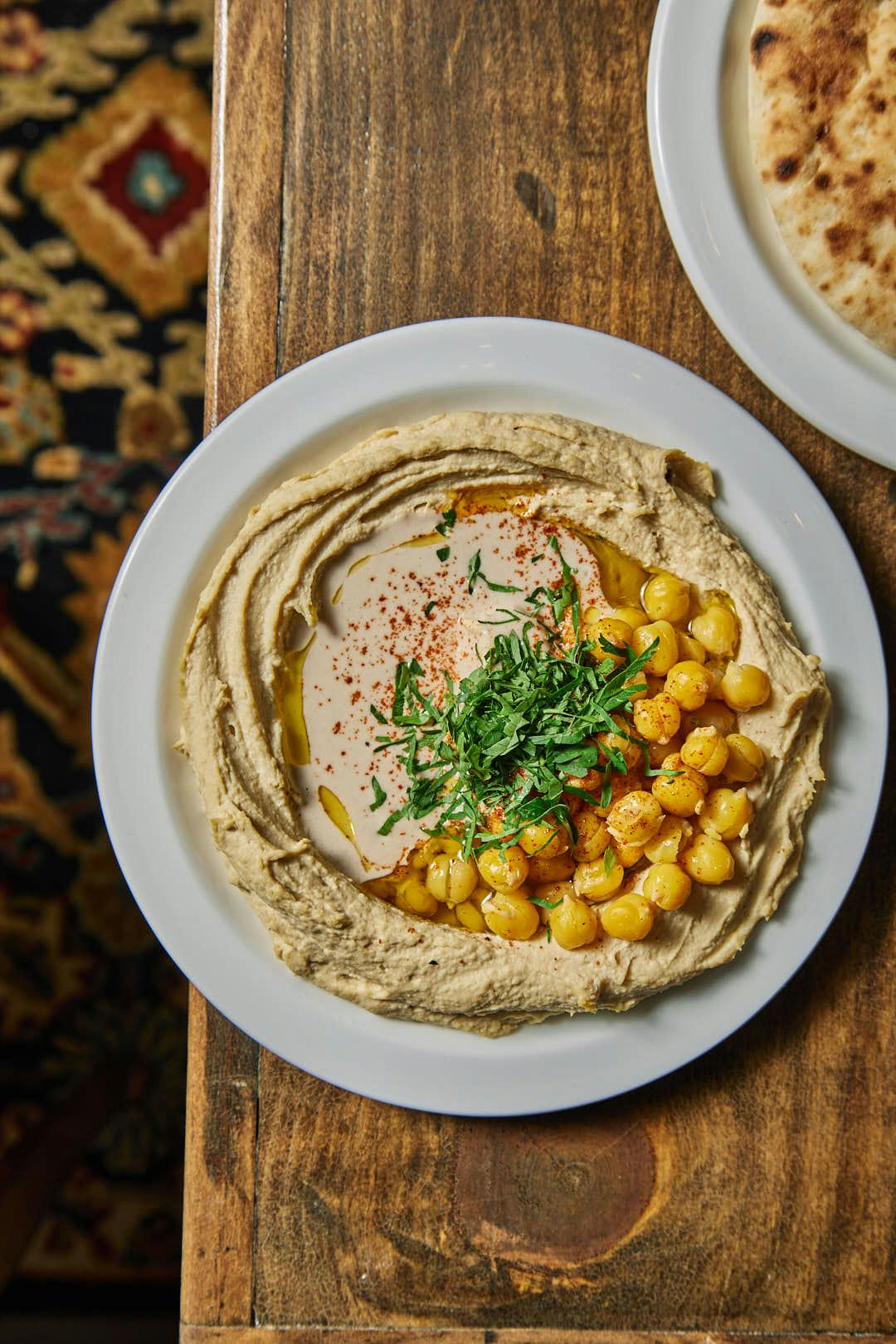
Pita also accompanies the glistening hummous plate. Topped with chickpeas and anointed with olive oil, the serving is generous enough to make a meal out of, although the aforementioned steak, falafel and cauliflower are available as add-ons.

Markovitz spent five long years perfecting his green herb falafels, which perhaps explains why he’s loathe to share the top secret recipe beyond the fact that it contains 14 ingredients, 13 of which are green (and one of which is red chili pepper). Biting into one reveals a shock of gorgeous green, but the visual delight is secondary to the wonderful wallop of flavours and textures that assault your mouth in the best way possible.
If lunch is designed to get you in and out of Mossop’s fast, dinner is programmed to be the kind of feast that makes you want to linger late. Like breakfast, it starts with different-sized salatim platters to get everyone into the sharing zone.
With the exception of a grilled branzino, most mains are roasted and arrive on skewers. There are cauliflower and mushroom kebabs as well as tender morsels of Tajima steak, grilled simply after being rubbed with salt, pepper and house spices.
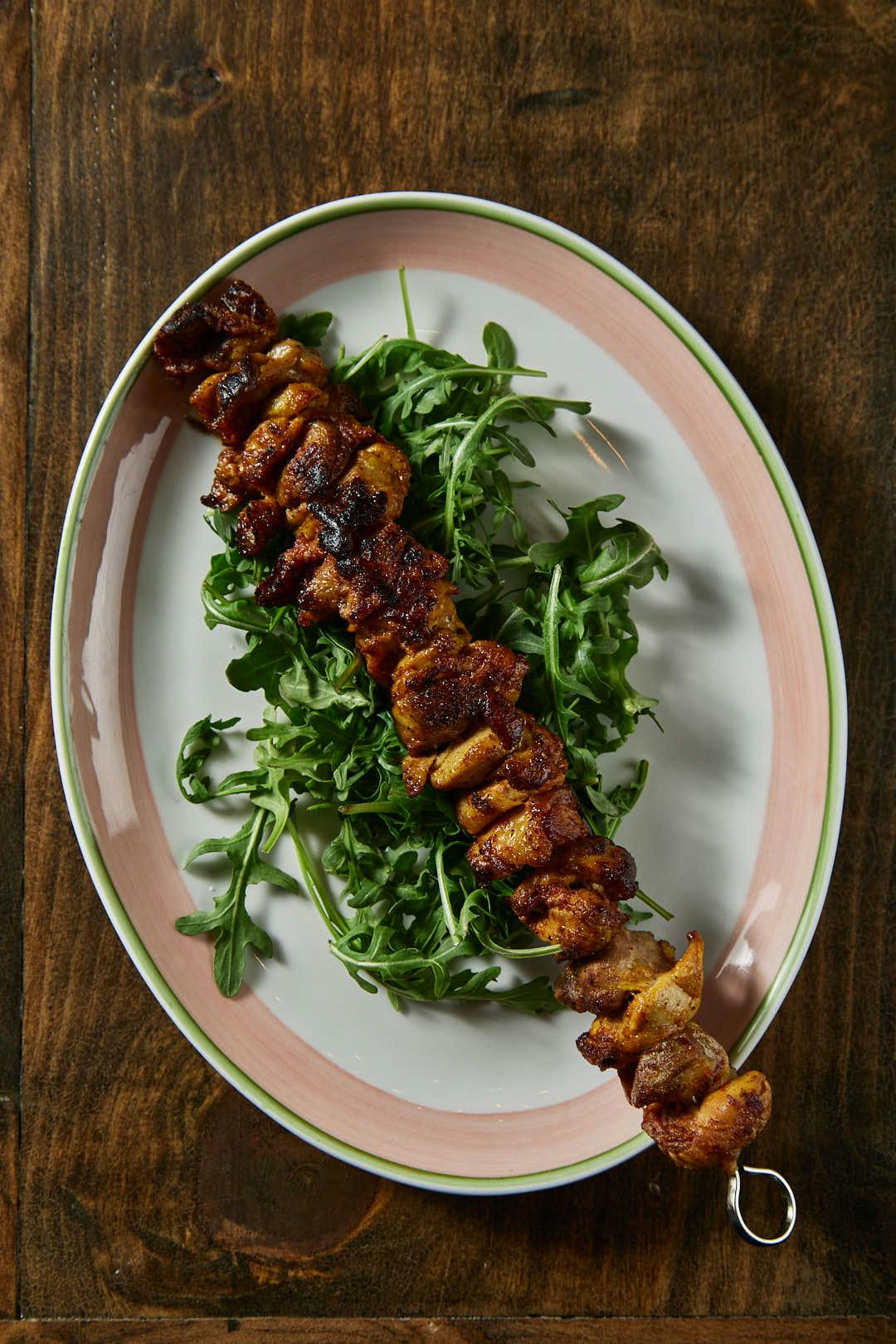
The tenderness and tastiness of the chicken kebabs are enhanced by being marinated in amba, a fermented pickled mango traditionally from Iraq, whose notes of citrus, and more surprisingly, curry, are revelatory.
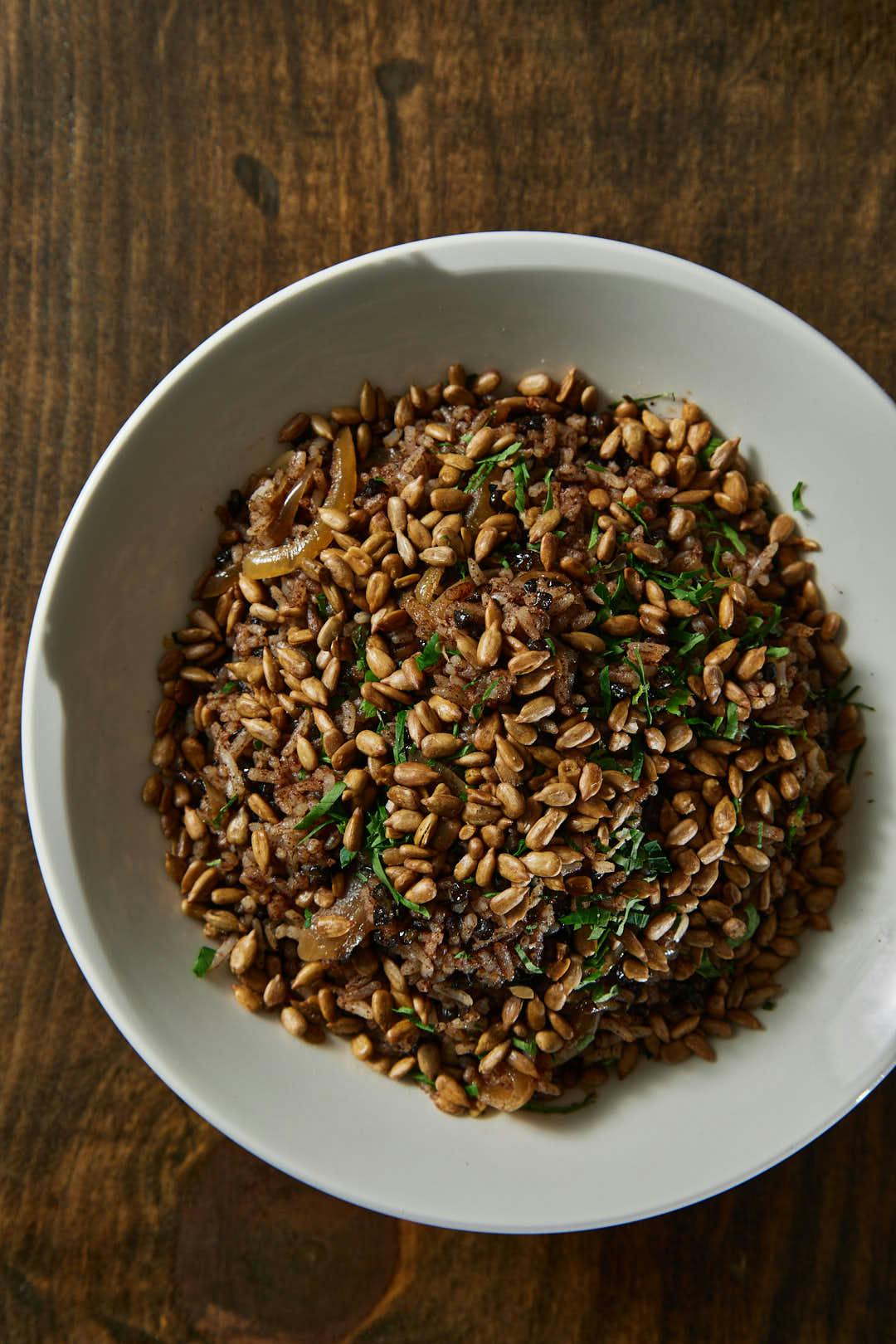
The mains beg to be accompanied and there’s no shortage of available escorts. The fragrant majadra features shiny black lentils and rice perfumed with cinnamon and cumin. Tossed with caramelized onions and toasted almonds, it’s drenched in truffle oil.
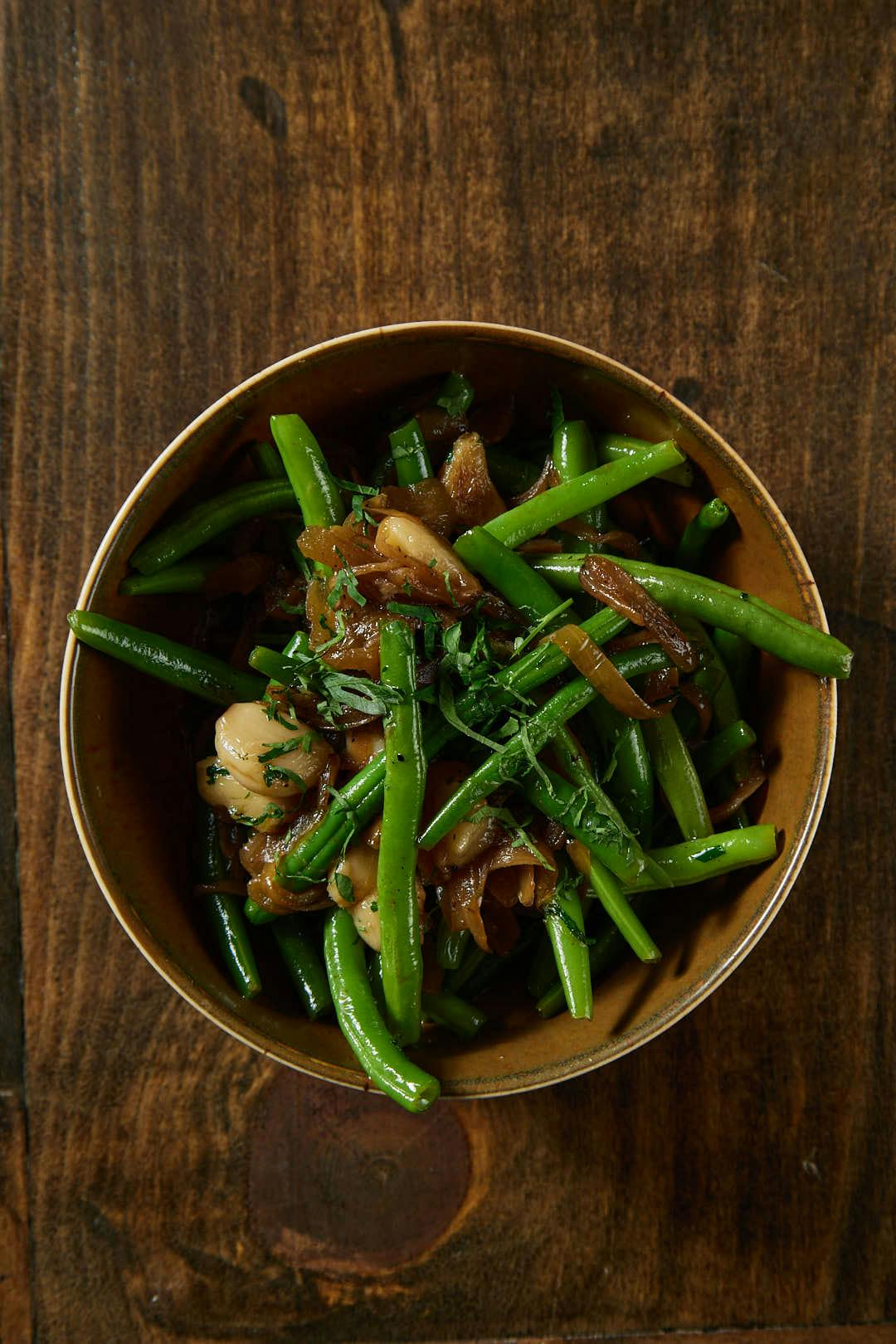
The French green bean salad is an exercise in bright simplicity; the beans are sauteed to al dente crispness, then enlivened with caramelized onions and confit garlic.

The fattoush salad features chickpeas and diced cukes, green pepper, tomato and onion, sprinkled with fresh herbs and doused in a lemon-tahini-sumac vinaigrette. Use your spoon to break the fried fluffy pita on top into shards with which you can scoop up the veg.

It’s hard to resist the fries, especially when they arrive, hot and crispy, dusted with Za’atar and accompanied by a tahini-amba aioli that will banish thoughts of ketchup or mayo from your mind.

If the savoury dishes at Mossop’s are light and healthy, the desserts are inversely rich and hedonic. A double chocolate cookie is served a la mode with, instead of hot fudge, date honey and raw tahini. Competing for all-out decadence is the triple fudge chocolate brownie, lavishly filled with chunks of milk, dark and creamy white chocolate.
Both desserts are made fresh daily at Romi’s as are the other sweet and savoury baked goods for sale at the pastry case perched upon the bar. They pair nicely with coffee (supplied by nearby Detour) and teas (supplied by Metz), but the bar is also well stocked with wines, beers and spirits.
Food and beverage manager, Jhovaine Brown, has concocted riffs on classic cocktails, many of which cleverly allude to the hotel’s storied history while also incorporating Middle Eastern aromas and spices.

As refreshing as a cuppa, Queen Victoria High Tea mingles English gin with green tea. A garden full of sweet and sour notes are provided from lemon, lime and pineapple juices as well as honey and fresh mint.
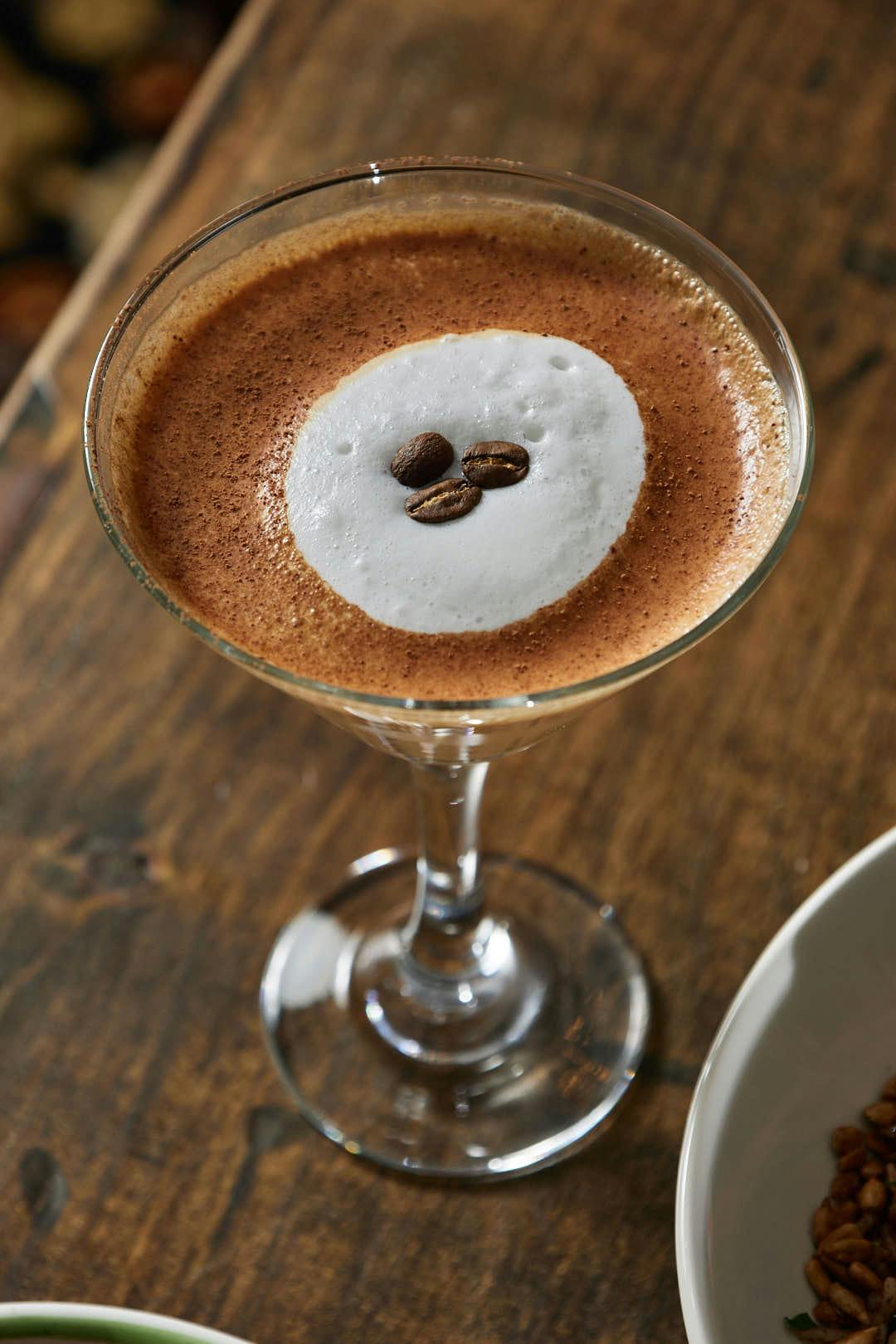
Offering more of a kick, the Punch Me Up is Brown’s version of an espresso martini in which vodka is caffeinated to the max via shots of espresso, Kahlua, Baileys and a sprinkling of coffee beans.
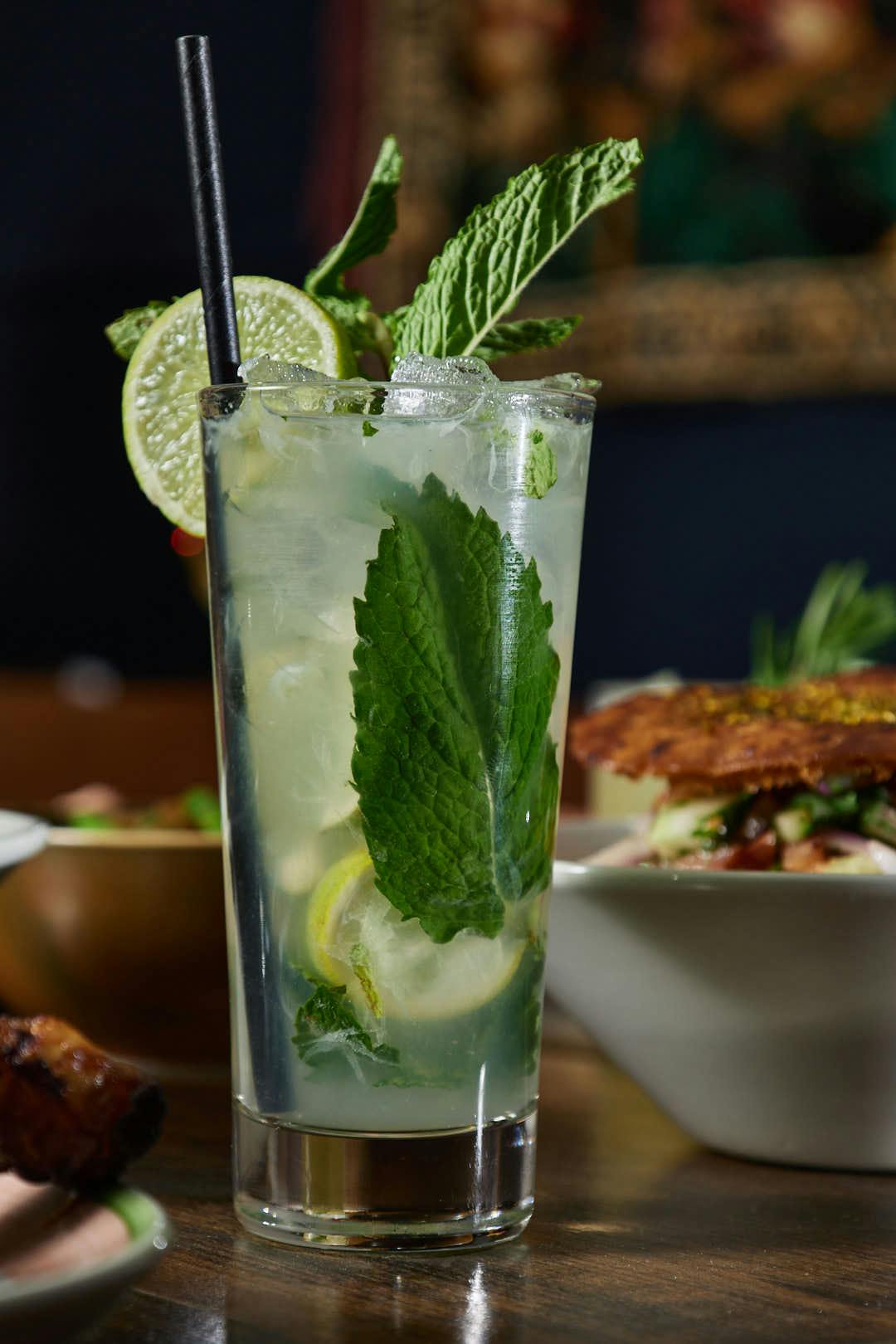
Mojito fans should try the version made with Arak, whose sharp anise piquancy brings a novel Mediterranean complexity to the standard lemon-mint-soda mixture.

All cocktails are available in mocktail mode, but there are also some original non-alc potions available. The Seedlip Mule makes use of Seedlip non-alcoholic gin, added to lime juice and ginger beer, for a simple, yet refreshing libation.

Fans of fizz can find effervescent comfort in a Lavender Cooler (San Pellegrino and OJ spiked with lavender syrup) or the Yonge Street Sparkler (raspberry puree, lime juice and ginger beer).
Ultimately, comfort happens on a lot of levels at Mossop’s. As the name explicitly promises, Mossop’s is a Social House, a home away from home where you can drop in, sit down, kick back, drink up and pig out (or merely nibble away). Most of all, it’s about sharing – moments, stories and food. Particularly food.
“It’s about sharing plates, but also cuisines and influences,” says Markovitz. As such, Mossop’s holds up a mirror to present-day Toronto, "a city that’s a little bit of everything... and a lot of influences all the time.”
Recommended For You